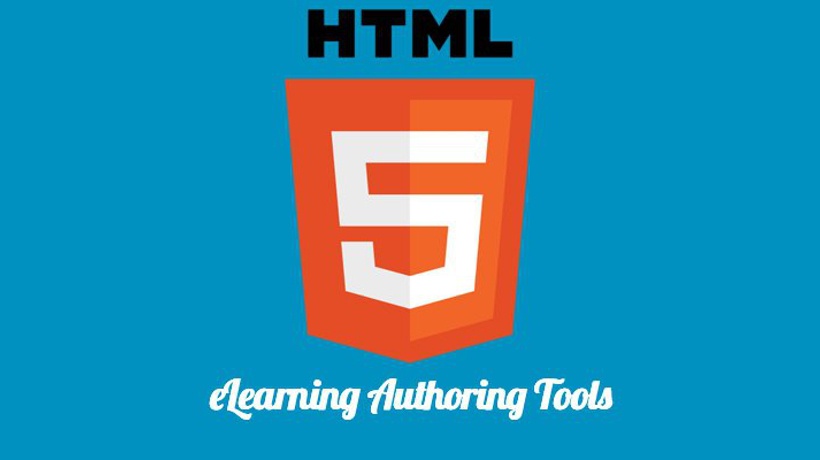Develop Your Next Online Training Course
Cloud-based eLearning authoring tools differ from in-house servers in a variety of ways. They generally have monthly subscriptions and/or annual licenses rather than a one-off fee. Some allow offline access but most need a live web connection to work. They require routine upgrades and maintenance, and you’re giving over control of your data. When you use eLearning authoring tools based on the web, these updates and routine checks are part of the product price. It’s not something you have to consciously think about, and it happens without your input or notice. What else makes web eLearning authoring tools the right choice for your business?

1. Access From Anywhere In The World
The first and most obvious perk of web-based anything is access. As long as you’re connected to the internet at a reasonable speed, you can log in anywhere. At the office, in transit, in the field, at home, during your commute, anywhere. This is usually seen as an advantage for employee training participants but it helps eLearning content developers, too. After all, they probably have other tasks to occupy their working hours. Web log-ins allow them to work on the online training course even when they’re traveling. And because it’s an eLearning authoring tool, it’s easy to track your hours on a specific eLearning project. This helps your L&D team when they need to clock overtime for eLearning course development.
2. More Effective Translation Tools
We’ve all used Google Translate. It can be helpful in small doses and amusing to those familiar with the language you’re trying to convert. But it’s not an ideal tool for professional use, especially for large pieces of potentially jargon-filled text. When you buy canned eLearning authoring tools, you’re restricted to whatever translation tools are pre-loaded into the software. With web-based eLearning authoring tools, your eLearning vendor has a bigger role. They have a higher incentive to keep everything working because you need them 24/7. They might even have a living in-house translator—or a contractor on speed-dial. This is much better than built-in AI translation.
3. Automated Back-Ups For Your Data
When was the last time you used WordPress or Google Docs? If you have them handy, open a new page, type a few words, and then watch. The eLearning authoring tool is designed to auto-save every few seconds. This means all your data is preserved with no initiating action on your part. So even if you forget to—manually—save your work, your eLearning authoring tool has you covered. Aside from real-time saving, web eLearning authoring tools frequently do a mass update overnight. And it has redundancies. So even if one of their servers fail, your back-up is backed-up elsewhere. In other words, data is always protected. When searching for a new eLearning authoring tool, ensure that the eLearning vendor has advanced data security measures in place to avoid breaches or loss.
4. WYSIWYG Functionality
IT is one of the most popular employment sectors, and we all want our kids to learn how to code. But the tech world is swiftly merging with the world of "plebes," and they’re making it easier for us to work. We can’t all code from scratch and we don’t need to, especially in areas where tech isn’t the driver. Online training course material usually comes from eLearning content experts who don’t necessarily need digital development skills. Web eLearning authoring tools offer WYSIWYG editorial panels. This allows your Subject Matter Expert to focus on populating the online training course while techies can work out the required functionality. The online training content may differ but back-end needs are the same, so the eLearning vendor’s techies can handle that.
5. Lower Maintenance Costs
Web eLearning authoring tools are usually more cost-effective to upkeep since the eLearning vendor often provides regular updates, unlike locally installed platforms that place that burden on your IT team. But it isn’t just the eLearning authoring tool maintenance that’s less expensive. Web eLearning authoring tools also streamline content updates and revisions to decrease payroll hours. For example, your team can quickly access a simulation to make the necessary changes and incorporate new compliance regulations. They simply modify the eLearning template on their mobile device instead of starting from scratch—provided they can get to a PC that’s equipped with the eLearning authoring tool.
6. Better Teamwork
Another factor to consider in the eLearning authoring tools comparison checklist is how your team collaborates. Web-based eLearning authoring tools allow them to work together from the far reaches of the globe, which produces a higher quality in a finished product that incorporates the talents of your entire team. For example, your SME can give their input and fine-tune the finished product before launch, given that they have unique experience and expertise. Some web eLearning authoring tools even feature built-in collaboration tools, such as the ability to leave revision notes so that everyone is on the same page.
About a decade ago, we were all wary about storing our data in the cloud. Lots of us were using it already, we just didn’t know it—Hello Gmail! Today most of us have formally migrated, but a few stragglers are still apprehensive. So, what are the advantages of using eLearning authoring tools which run live on the internet? You can log in wherever you are, even while traveling overseas as long as you have a strong internet connection. Because this is a live link, your translation quality is probably better. Your data updates and backs up automatically and your User Experience is better. Finally, the learning curve is faster, thanks to WYSIWYG creation and editing eLearning tools.
eLearning Authoring Tools Comparison Guide: How To Pick The Right Platform For Custom eLearning Content Development is your go-to guide to help you analyze, compare, and contrast all the possible eLearning authoring tools that compliment your organization's goals. Download it to discover how you can choose the best platform for custom eLearning content development.






